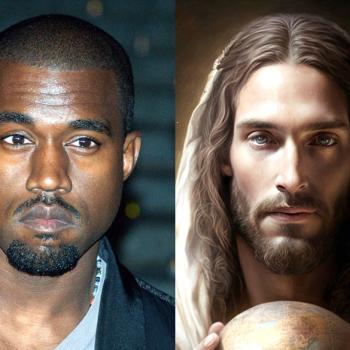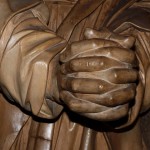Uphold your Church, O God of truth, as you upheld your servant Athanasius, to maintain and proclaim boldly the catholic faith against all opposition, trusting solely in the grace of your eternal Word, who took upon himself our humanity that we might share his divinity; who lives and reigns with you and the Holy Spirit, one God, now and for ever. Amen. – Collect for the Feast of St. Athanasius, Lesser Feasts and Fasts

Today the church celebrates one of her greatest theological minds, Athanasius of Alexandria. Athanasius (296-373) defended the faith against non-believers through his prolific writing and episcopal ministry.
For Further Reading
http://www.monasterodibose.it/en/prayer/ecumenical-martyrology/958-may/2114-may-2
All Along the Watchtower – https://jessicahof.wordpress.com/2015/05/02/st-athanasius/
Full text of the Athanasian Creed – https://www.ccel.org/creeds/athanasian.creed.html
Historical description of Athanasius – http://justus.anglican.org/resources/bio/152.html
Reflection: On the Incarnation of the Word
“On the Incarnation of the Word” is considered by many historians and scholars to be Athanasius’ most important work. I have copied below my personal and theological reflections after reading it for the first time as a way to commemorate Athanasius on the day of this feast.
Athanasius wrote On the Incarnation of the Word as a follow up to his document, Contra Gentes. These documents were written to demonstrate how and why the divine logos became human. If the previous document was written in response to a Gentile audience, this second writing was done in response to many different opponents and is deeply and profoundly theological. Before offering a brief outline and summation of the document, it is important to first suggest Athanasius’ thesis:
“The death of all was consummated in the Lord’s body; yet, because the Word was in it, death and corruption were in the same act utterly abolished.”
At the root of the Incarnation is the understanding that humanity was in a dilemma—one only God could solve—and the necessary and only solution was that the divine logos put on human flesh and assume our corrupt nature that we might be redeemed by his life, death, resurrection and ascension.
Sin, or corruption, is the human problem requiring divine intervention. In our humanity and human frailness we have sinned and been separated from God the Father, the first person of the Trinity. In order to redeem his creation, the Godhead humbled himself and became man. The early church maxim, “that which he did not assume he could not redeem” is poignant here. It was strongly held by many and argued by Athanasius that the Incarnation was the vehicle or means by which Christ assumed our humanity and redeemed it. The uncorrupt and immutable God put on human flesh, immersing himself into a corrupt world, so that one day men and women could again live with God in peace.
To such a view it is essential that Jesus be both fully human and fully divine, that he be the divine logos. Why? If Jesus were simply a man and not divine then he would have no power whatsoever to trample death and tread down hell. If Jesus were divine only and only seemed to be man then he could not redeem our humanity because it was not assumed. This view of the Incarnation goes hand in hand with the classic Christus Victor theory of the atonement. The Apostolic Tradition gives great voice to this view when describing the work of Christ in the Eucharistic prayer.
The Incarnation is therefore the first and fullest—to date—manifestation and revelation of God. The Incarnation was utterly humble and entirely efficacious. The second manifestation will be powerful, glorious and triumphant as Christ comes back to finally consummate the kingdom that he has already inaugurated. Sin, death, hell and corruption had power and authority over mankind; death was the final judge as it were. However, in Jesus we have seen and met the true Judge of all things; this title is entirely appropriate both because he is the second person of the Trinity and also because through his crucifixion and resurrection he has spoken the last word over death.
Athanasius makes it abundantly clear in his organization of the document and in his actual argument that Incarnation, crucifixion and resurrection belong together in the same theological understanding of Christ. That is, you cannot talk about one without talking about the others. Athanasius refutes both Jew and Gentile by demonstrating the biblical backing and absolute understanding of Christ’s divinity and victory. Therefore, understanding the Incarnate God as the divine logos made man is essential to understanding why and how we are redeemed.
















